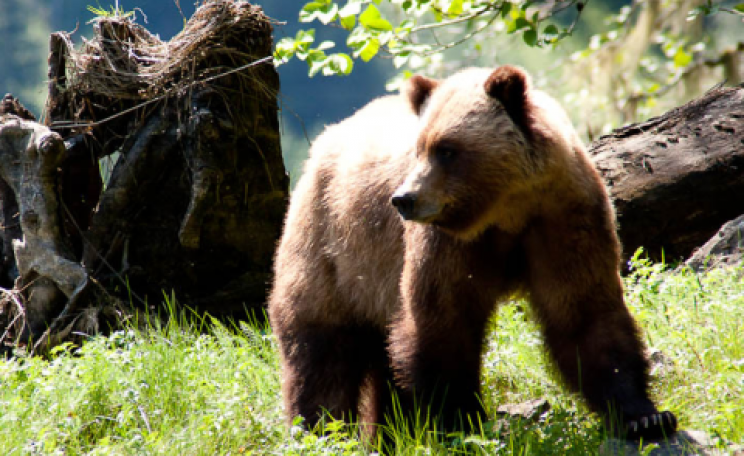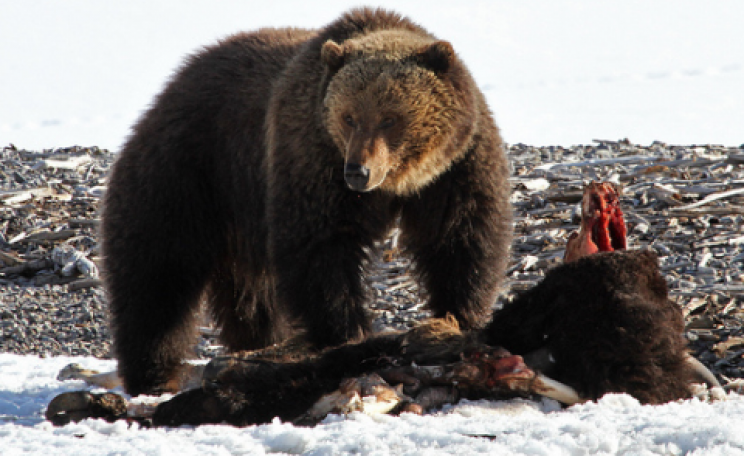Biodiversity is in crisis throughout the world. News reports bombard us with facts about the decline of species' populations and the ways in which we are causing them. However, the trend in Europe is different - many species are making a remarkable recovery, increasing in abundance, providing benefits to local people and inspiring hope for the future of species conservation.
A new report, entitled ‘Wildlife Comeback in Europe', is the first ever in-depth report documenting species recovery in Europe. Scientists from the Zoological Society of London, later joined by those from BirdLife International and the European Bird Census Council, worked with experts across the continent to gather data on the abundance and distribution of some selected European species that have shown signs of a comeback.
The data was analysed to produce detailed accounts of how, why and where 18 mammal and 19 bird species have recovered over the past 50 or 60 years.
All but one of the species, the Iberian lynx, showed signs of recovery. Brown bear numbers have doubled, Grey wolves have increased by 30%, and the White-tailed sea eagle has also made an impressive comeback, to name just a few of the more familiar species.
There was great variation between species and regions, with an increase in Red kites of less than 10% but of more than 14, 000% for the European beaver. For birds, their average range remained stable, but for mammals their range had increased by an average of 30%, and their comeback was largest in southern and western Europe.
The European beaver has shown by far the largest increase - by just over 14,000% since 1960. A doubling or tripling of population size has occurred in all decades since then. The population in Europe had been reduced to just 1,200 individuals at five isolated sites at the beginning of the 20th century due to over-exploitation and habitat loss.
Hunting restrictions and legal protection at those sites preserved genetic material which allowed some to act as source populations for extensive reintroduction programmes that have taken place in at least 25 European countries. They now total 337,500 individuals in Europe, 33% of the global population.
With an increase in abundance of over 3000% since 1960, the European bison has also staged a remarkable recovery. The largest herbivore in Europe went extinct in the wild in the early 20th century as a result of habitat loss and fragmentation, logging and unlimited hunting and poaching. Only 54 individuals remained in captivity, animals that formed the basis for a large scale breeding and reintroduction programme.
Currently, bison exist in 33 free-living, isolated herds totalling 2, 759 individuals. Particular strongholds exist in the Bialowieza Primeval Forest that straddles Poland and Belarus, where they were first reintroduced in 1952. The most recent reintroduction took place earlier in 2013, with the release of 8 individuals in Germany - the first free living bison to live there for 400 years.
For the birds, the geese are leading the way. All three distinct populations of Barnacle goose (in Greenland, Svalbard and Russia) have increased since the 1950s, following dramatic declines due to hunting. For the Barnacle goose, and many other species of birds, habitat protection has been essential for their recovery, as well as a reduction in hunting pressure.
The Russian population has shown the greatest increases - in the early 1950s, they numbered 10,000 individuals, but a survey in 2009 counted a total of 908,000 individuals. The increase in population has brought conflict with agriculture, and compensation and subsidy schemes are now in place in several European countries.
The increase in Pink-footed geese has also caused conflict with farmers. The two distinct populations in Europe, the Icelandic population which winters in Britain and the Svalbard population which winters in continental northwest Europe, have also increased since the 1950s, thanks to protection from shooting and the increased availability of high quality food at their wintering grounds, a result of the intensification of agricultural practices. Pink-footed geese were once a scarce winter visitor in Scotland, with around 8,500 individuals in 1951. This year, more than 350,000 individuals have been recorded, an increase of 4,056%.
Many animals in Europe have not fared well over the past few centuries but, as the species accounts show, several factors have led to their reversal in fortunes. Legal protection in the European Union (such as the habitats directive), curbs on hunting, the phasing out of toxic chemicals and setting up new, or boosting existing, populations have all helped.
Professor Jonathan Baillie, director of conservation for the Zoological Society of London, says: "It's really refreshing to see that these recoveries are actually the result of targeted conservation efforts. We're seeing increased legislation, and directly in response, we're seeing species comeback. We're seeing commitments to leaving space for nature, and in turn we're seeing improved status of species. So the conditions and conservation actions on the ground are working, and that's extremely promising."
Another driver of recovery has been the movement of people from rural areas to cities, leaving more space for wildlife. However, with a human population of approximately 740 million, the return of animals is likely to cause some conflict in Europe. In addition to the conflict between farmers and geese, the return of wolves is causing farmers to worry about the threat to their livestock, for example.
The report recommends that governments set up compensation schemes but, while acknowledging the challenges of reconciling human and wildlife interests, also describes the many benefits that species return will bring. Habitats are often restored. The reintroduction of predators improves the functioning of ecosystems and the services they provide. Carnivore presence can change the behaviour and distribution of ungulates, which damage habitats if their numbers grow too much.
And in these harsh financial times, the economic advantages can be great. Wildlife tourism has been proven to be a very profitable activity, and wildlife comeback can promote local and national tourism, especially if there are charismatic, flagship species that attracts visitors. Wildlife watching or photography tours can provide significant economic benefits to local communities, and can even contribute to the country's GDP. Employment opportunities are created (especially in rural areas where unemployment is high), educational opportunities are enhanced, and more contact with nature benefits our cultural identity as well as our physical and mental wellbeing.
The report was commissioned by Rewildling Europe, an organisation that aims to "rewild" one million hectares of land in Europe by 2020. Frans Schepers, the managing director, writes in the foreword to the report: "Wildlife will fairly quickly bounce back if we allow it to - this report shows that. Wildlife is taking the opportunity - it is our turn to follow and find new ways in our modern society to live alongside our wild animals."
While celebrating the success stories, the report does warn that we still have a long way to go. Populations remain much lower than their historical levels and, although now recovering, many species have not yet reached levels necessary to secure sustainable, long-term populations. But the species accounts do bring hope. They vindicate decades of conservation work in Europe, and prove that with enough effort and resources, species can be brought back from the brink of extinction.
The report states: "Understanding the mechanisms allowing this wildlife comeback is crucial to better conservation of wildlife both in Europe and across the world, if we can apply the principles underlying conservation success to reverse declines in other species." We must learn the lessons of conservation efforts that have enabled so many species in Europe to recover, so that in future there will be more stories of wildlife comeback in the rest of the world. This report provides hope that we can make that happen.
Anna taylor is a freelance conservation journalist, and chief blogger for http://conservation-jobs.co.uk
http://www.annataylorfreelancewriter.webs.com/
Image courtesy of www.shutterstock.com
| READ MORE... | |
 |
NEWS ANALYSIS Climate change mitigation essential for even the most common species Anna Taylor takes a closer look at the worrying findings of a recently published study which, unusually, chose to assess potential climate change mitigation scenarios on the more widespread and common species found on our planet..... |
 |
NEWS ANALYSIS A license to trash? Why Biodiversity Offsetting (BO) will be a disaster for the environment As the UK government gives the go ahead for the country's first Biodiversity Offsetting (BO) scheme, Lorna Howarth explains why it will be a disaster for the nation's already declining wildlife |
 |
COMMENT What do Ugly Animal Contests Tell Us about Conservation? Andrew Tipp questions why society seems to prioritise the conservation of cute animals over ugly ones, and urges us to shift our focus to all endangered species, beautiful or otherwise...... |
 |
COMMENT Badger Cull has brought out the best of British compassion The Badger cull debate has become a much wider discussion about our relationship with wildlife and how we value and care for it says Dominic Dyer..... |
 |
REVIEW The Rediscovery of the Wild Martin Spray reviews a book that presents varied perspectives on the essence of true 'wildness' and the necessity of connecting with 'wild' nature..... |








